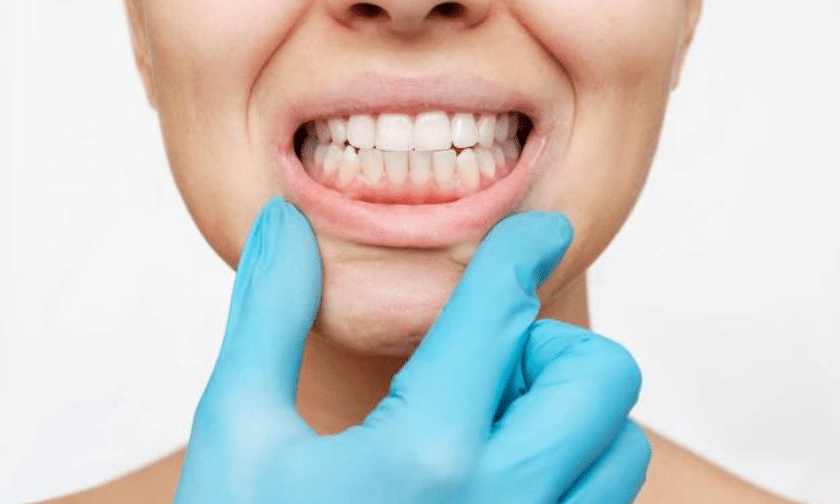
Periodontics is a branch of dentistry that focuses on the health of the gums and supporting structures of the teeth. Periodontists are gum disease specialists who provide treatment and preventive care for patients with gum disease. They also place dental implants and perform cosmetic procedures to improve the appearance of the gums.
The latest technology available in periodontics includes lasers, 3D imaging, and tissue regeneration. Lasers are used to treat gum disease and can also be used for cosmetic procedures such as gummy smile correction. 3D imaging allows periodontists to get a detailed view of the mouth so they can create a treatment plan that is tailored to each patient. Tissue regeneration is a new treatment option for patients with advanced gum disease. It involves using growth factors to stimulate the regeneration of lost tissue.
Top Technologies Used in Periodontics
In the world of dentistry, technology is always evolving to provide better care for patients. Periodontics is no different, and there are a number of new technologies that are being used to improve periodontal care. Here are some of the top technologies being used in periodontics:
- Lasers:
- Digital X-Rays:
- Cone Beam CT Scans:
- Intraoral Cameras:
- 3D Printing Technology
1. Laser Dentistry and How it Works
Laser dentistry is a minimally invasive, effective treatment option for a variety of dental conditions. Laser energy can be used to remove tooth decay, reshape gums, and whiten teeth. It can also be used to treat periodontal disease by reducing the size of the gum pocket and eliminating bacteria.
Laser dentistry is safe and gentle, and patients often report little to no discomfort during treatment. Recovery time is typically short, and there is no need for stitches or other invasive procedures. Laser dentistry is an excellent option for patients who are looking for effective, minimally invasive dental care.
2. Digital X-Ray Imaging
Digital x-ray imaging is one of the latest technologies available in periodontics. This type of imaging allows for a more detailed view of the structures around the teeth, including the roots and supporting bone. This information is important for diagnosis and treatment planning. Additionally, digital x-rays can be easily shared with other dental specialists, which can improve communication and coordination of care.
3. Cone Beam CT Scanning
Cone beam CT scanning is a type of x-ray that provides a three-dimensional view of the teeth, bones, and soft tissues in the mouth. This technology is often used in conjunction with dental implants because it allows for more accurate placement of the implant in the jawbone. In addition, cone beam CT scanning can be used to diagnose periodontal disease and assess the severity of bone loss.
4. Intraoral Cameras
An intraoral camera is a small, hand-held camera that your periodontist can use to get a close-up view of the inside of your mouth. This high-tech tool allows your periodontist to get a better look at your teeth and gums so they can provide you with the best possible care.
Intraoral cameras are just one example of the latest technology available in periodontics. Other cutting-edge tools that your periodontist may use include lasers, 3D imaging, and computer-aided diagnosis. This state-of-the-art technology allows your periodontist to provide you with the best possible care and results.
5. 3D Printing Technology
3D printing technology has revolutionized the way many industries operate, and dentistry is no exception. This cutting-edge technology is now being used in periodontics to create custom dental implants, bridges, and other prosthetics. Not only does this improve the fit and function of these devices, but it also cuts down on wait times and surgical procedures.
3D printing technology works by using a computer-aided design (CAD) file to create a three-dimensional model of the desired object. This model is then used to create a physical object using a 3D printer. The advantage of this technology is that it allows for much more precise manufacturing than traditional methods. This means that dental implants and other prosthetics can be made to specifically fit each patient’s mouth, which leads to better results.
In addition, 3D printing technology can be used to create models of a patient’s mouth before surgery. This helps the surgeon plan the procedure more precisely, which can lead to fewer complications and a quicker recovery time.
If you are considering dental implants or another type of periodontal surgery, ask your dentist if 3D printing technology can be used to improve your care and results.
Conclusion
The latest technology in periodontics is an exciting and beneficial development for anyone looking to improve their oral health. With the help of these technologies, patients can now receive even better care from their dentist and achieve better results faster. Whether it’s laser treatments or digital imaging techniques such as 3D scans, these advancements offer a wide variety of options for improving one’s dental wellbeing. For those interested in exploring further into what these new periodontal treatments technologies can do for them, consulting with an experienced periodontist is always suggested.
FAQ’s
Q: What is the latest technology available in periodontics?
A: The latest technology available in periodontics is called LANAP, which stands for Laser Assisted New Attachment Procedure. This new laser surgery technique helps to improve the connection between gum tissue and bone, which can help to improve the overall health of your gums.
Q: How does LANAP work?
A: LANAP works by using a laser to remove the damaged tissue around the gum line. This helps to improve the connection between healthy gum tissue and bone, which can lead to better overall gum health.
Q: Is LANAP safe?
A: Yes, LANAP is considered a safe and effective treatment option for patients with periodontal disease. The procedure has been cleared by the FDA and has been shown to be an effective way to improve gum health.
 7949 E. 24th St., Yuma, AZ 85365
7949 E. 24th St., Yuma, AZ 85365 Dentist Yuma
Dentist Yuma